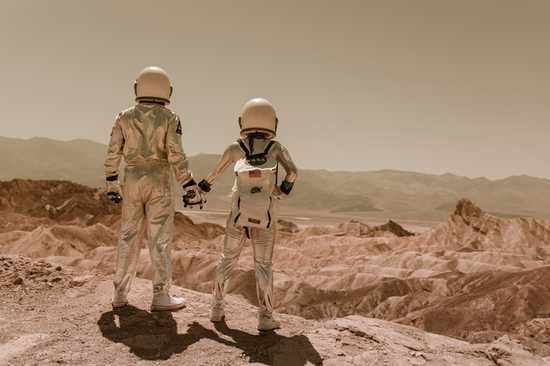If you’re one of the estimated three gazillion people. Who has seen or will see Chris Nolan’s blockbuster Interstellar. One thing is already clear: this is not a documentary. That means it’s fiction, science fiction. Which is how you get science and fiction in a science fiction pair. So if you go to the movie looking for many science “incomprehensible” moments. Let’s say in advance that you will find some.
The movie Interstellar is quite scientifically accurate. Some concepts in the film. Such as wormholes and time dilation, supported by theoretical physics. But has not been conclusive proven. Other aspects of the film. Such as the gravity equation, based on real equations but poor understood.

Part of Interstellar’s considerable appeal is pushing the science side. Nolan enlisted Caltech cosmologist Kip Thorne as the film’s technical advisor. Thorne held the production whip to ensure that. The plot came as close as possible. To the terrifying complex physics that govern the universe.
Interstellar is a sci-fi thriller of epic proportions. Covering everything from escaping Earth due to climate change. To wormholes and time dilation. There are many interesting concepts with varying degrees of scientific truth. So read on to find out if anything along Cooper’s formidable journey could be possible.
So where did Interstellar play it completely straight. And where did it take occasional narrative liberties? Here are some key plot points and the verdict from the pundits (warning, spoilers ahead):
Can people travel through wormholes?
The wormhole in Interstellar is the driving force behind the entire plot. A portal appears somewhere near Saturn. Omniscient beings of the fifth dimension seeming created that. A wormhole is a “tunnel”. That bends space-time and allows energy and information to move from one side to the other. Rome offers the simplest explanation in the film itself, but you can read more here.
Can they exist? Science points to the theoretical possibility of one. But we haven’t discovered a wormhole yet, so it’s still a huge hypothetical. Additionally, the walls of a wormhole are internal unstable. So traveling through it would cause the wormhole to collapse on you. The odds of finding a natural occurring wormhole are small. So for a passable one to exist. Some form of an advanced civilization with the ability. To move entire stars must have created. It’s mind-boggling, but theoretical physics still allow wormholes to exist. We need the fifth-dimensional beings to notice us first.

Verdict: Wormholes have been a sci-fi staple for decades and will stay that way. Traveling through one is almost impossible. (Side note: falling into a black hole will kill you.)
Can robots like TARS exist?
The hardest part of creating a robot like TARS or CASE would be its artificial intelligence. Not the motor movements or design. The simplistic design behind TARS’ monolithic display has won widespread adoration. Partly because it’s an homage to the monolith in 2001: A Space Odyssey. But because of its witty jokes. A rigid and rectangular designed robot would theoretical work. But it would must a huge amount of torque to move its limbs the way it does in the movie. For example, transporting Dr. Brando and racing through. The sea would must a huge amount of energy.
A real robot would have wheels and claws. Instead of Lego-shaped hands in such a situation. Besides the power, human hours could programmed from the vocabulary. To the environment of humor, which is not possible in a single product today. At least not in a version as refined and deterministic as TARS. Not to mention all the sensors, circuits, and wires. And hydraulics that would need to cram into a sleek mobile unit. For a robot like TARS to exist. Dozens of giant tech companies would have to devote thousands of people. Full-time to work on a single product—for decades. The movie explains this by saying it’s a modernized military robot. That makes sense in the setting. But wouldn’t be an ideal companion on a human-crewed interstellar mission.
Verdict:
AI will take time to become sophisticated; if possible, a monolithic design is not the way to go.
How does the ‘gravity equation’ help the mass exodus of humanity?
The equation that Murph tries to solve in her lonesome quest. To “save humanity,” called the “Gravity Equation” in the film. The gravitational equation also exists in real life. Although the two are not exactly the same. In the film, Murph and Prof. Brand tries to figure out the value of the numbers on the board to “solve gravity”. As this would mean the success of Plan A.
An evacuation response that can help the world’s population move off the planet. using gravity propulsion rockets. After gaining information about the ‘infinite gravity’ inside a black hole. She eventual figures it out.

One of the equations on this board is a version of Einstein’s famous field equation. A differential equation for gravity. Which explains everything from the big bang to black holes. And any gravitational anomaly. The conformation and discovery of “gravitational waves”. At the LIGO laboratory in February 2016 confirmed. One of Einstein’s key hypotheses about gravity. The LIGO discovery captured gravitational waves from two colliding. Black holes 1.2 billion light-years away. What Murph is trying to solve in the film is essential. An elaborate conceptualized Einsteinian field equation. That helps ‘create your own gravity, which could allow you to lift entire cities into space. It’s almost poetic how it’s Einstein’s work that ends up saving humanity in the movie. Along with a little help from Murph and some transdimensional interaction.
Verdict: Equations exist in some form, but they won’t help us leave Earth anytime soon.
Time dilation and tidal waves planet:
This one is the biggest eater of the movie. How can someone in a spaceship age 23 years. Four months and eight days while people on Earth are only there for about 3.5 hours? Let’s first try to understand some basics of time dilation.
Let’s say we’re on the surface of Miller’s planet with Rome up. In a spaceship orbiting the Gargantua black hole. According to Einstein’s general theory of relativity. A person in a place with less gravitational potential will have time to move morey. Compared to a person in high gravity, which is exactly what happens in the movie. Dr. Brand and Cooper are on Miller’s planet. Where the gravity exerted by Gargantua is immense. (causing massive tides as the planet rotates extreme fast).
But, Rome orbits Gargantua from a distance. So the effect of Gargantua’s gravity on him is much less. Note that time only slows relative between two groups of people. If we assume that the spaceship Endurance. That Rome is in has the same gravitational potential as Earth. 23 years will pass even for humans on Earth. Nobody experiences anything in slow motion.
Suppose Cooper were to wear a GoPro on his head for 3.5 hours and somehow be able to stream instant. That video to Earth in one shot (not possible. Because information can’t travel faster than the speed of light). His daughter Murph would have to see a 3.5-hour video, not slow motion. But, if he broadcast it live on Periscope. Murph would receive a few bits every few days or weeks, and the live feed would be in ultra-slow motion.
But, for the time dilation shown in the movie occurs. Miller’s planet must be traveling at speeds greater than 99.99% of the speed of light. Meaning it must be close to the black hole. Being so close to a black hole would adversely affect the planet. And it would not be able to exist. In its current form due to the incredible gravitational forces.
Verdict:
The math is a little off, but the time dilation effects are spot on with some creative leeway since it’s a sci-fi movie.
Move through time and space:
And finally: Anne Hathaway could move through time and space and help save all humanity. And her hair would still look fabulous.
Verdict: Who cares? We wouldn’t have it any other way.
Conclusion:
Interstellar was a beautiful spectacle; we could go on about the science in many more posts. Still, Kip Thorne, the film’s science advisor. And theoretical physicist at the California Institute of Technology in Pasadena. It has already written an Interstellar Science book. Many of the questions raised in the film explained. And his involvement pushes the film into the realm of possibility from the fringes of sci-fi. Despite its metaphysical elements… but that’s a post for another day.
